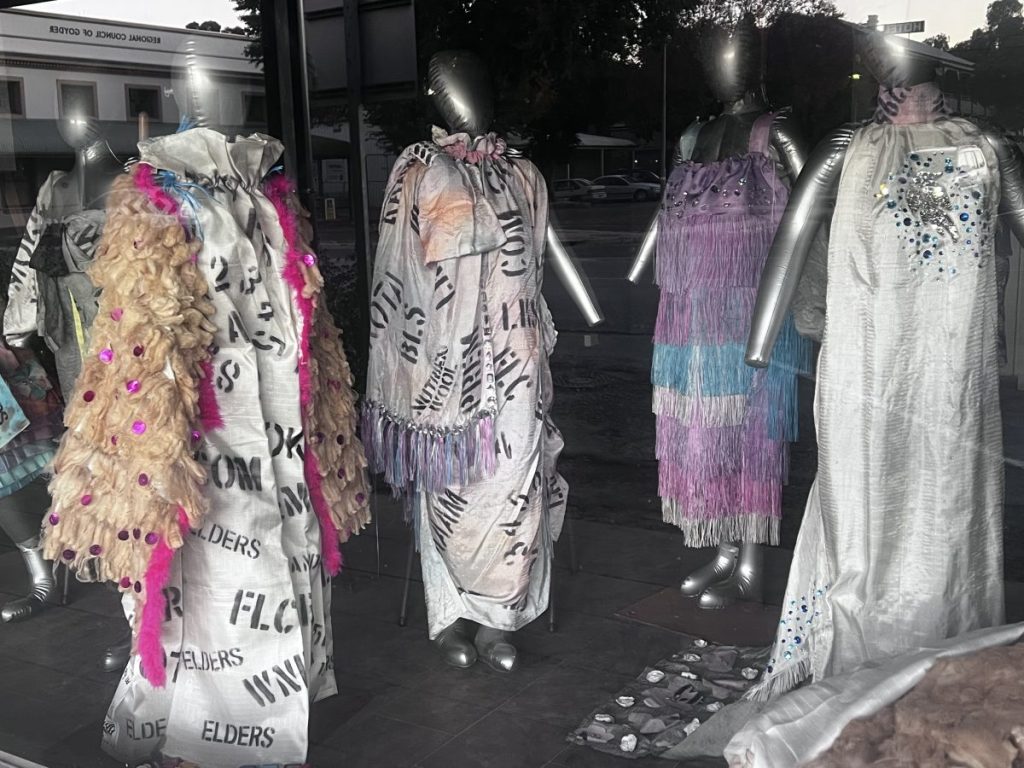Get Back to Burra, the AgTown finalist needs your love
A finalist in last year’s Agricultural Town of the Year, Burra is inviting everyone to its 180-year celebrations – even while the drought rages on.

Peggy Gebhardt is one of a committee of 14 volunteers coordinating and contributing to the Back to Burra 180th birthday celebrations throughout May.
The Back to Burra program will culminate in a town parade and community picnic with food trucks and entertainment on Sunday, June 1.
“Hopefully, it’s a nice day, although we do need the rain,” said Peggy.
Peggy anticipates between 20 and 30 floats and groups will take part in the parade, including local school children, the Barossa & District Pipe Band and vintage fire trucks, and Governor Frances Adamson AC will be on hand to judge the best entries.
The ongoing drought has impacted the township, but she notes that other areas in the state have been hit harder.
Meanwhile, kangaroos have moved onto Peggy’s lawns and gardens, “happily pruning” her roses.
Coinciding with History Month, the month-long Back to Burra program is a mix of the informative and entertaining – ranging from history talks and exhibitions, to opportunities for the community and public to get together.
Peggy has also pulled together a shopfront display of garments made from wool packs – a regular, and rather niche, competition category in the annual Burra Show.
You might like
“The material is extremely stiff, but the game changer was a couple of years ago when someone washed it,” said Peggy, whose work will show alongside that of school kids and fellow committee member Jackie Oates.
“Now, it’s a beautiful piece of material to work with, except it frays a lot.”
The Agricultural Town of the Year is an initiative of the Department of Primary Industries and Regions and delivered in partnership with InDaily. The award recognises South Australian towns that excel in agricultural practices and are great places to live and work.
Last year, Burra was one of three finalists, alongside Kimba and the eventual winner Penola. The public is invited to nominate a favourite SA agricultural town by Wednesday, May 21.
Back in Burra, the town hall is also celebrating 150 years with a gala dinner on Friday, May 30.

Peggy is married to Regional Council of Goyder Mayor Bill Gebhardt whose family have run merinos and cross bred sheep on their farm, Mokota, for six generations.
Bill said this drought is “probably as tough as it’s ever been”.
Around Burra, the main crops are wheat, barley and hay, and while the township is on mains water from the River Murray, the broadacre farms remain bone dry.
“Nothing’s germinating – normally, they’re up and flowering and looking good,” he said.
Stay informed, daily
With no local feed for livestock, and the drought’s impact likely to cascade because of added costs like freight bills for trucking in hay from interstate, he expects the pain will be felt by all South Australians.
“At the end of the day, South Australians need farmers for three meals a day,” he said.
While the feeding of female sheep to ensure the health of lambs is the priority, when the drought breaks, it will probably take three to four years to again build up the genetics of the flocks to a sustainable level.
“Farmers are going to need all the help possible to work through this,” he said.
Regardless, Bill said the mood in the town remains incredibly upbeat –particularly with the 180 birthday celebrations happening – and he pointed to tourism as offering an immediate financial boost to local businesses.
“If we could encourage more day trips, that would be the best thing ever,” he said.
“There’s a lot of good things to see here and we’re working on our World Heritage listing at the moment – there’s so many pluses.”
Burra is preparing a bid for the World Heritage listing of the Cornish copper mining landscapes at Burra and Moonta.
In the 1840s, the first copper miners and their families migrated from Cornwall, England, bringing their mining skills and profoundly impacting future mining in Australia.
By 1851, Burra’s copper mine was the largest metal mine in Australia, employing more than 1000 workers and fuelling the town’s growth to become the largest inland settlement in the country with a population of around 5000.
Some of that prosperity is visible in the historic bluestone buildings scattered through the town, while the preserved miners’ dugouts on the creek banks tell of a housing shortage during the mining boom.
Music fans can visit the ‘Midnight Oil’ house, and there’s also a mystery to solve via a mobile phone app that encourages exploration of the area.
Bill is hoping the town will build on its finalist status to take home the Agricultural Town of the Year award in 2025.
For towns that make it into the publicly voted Top 10 and are invited to put in their written submissions to move to finalist level, the process is “a good thing”.
“Between the farmers, agricultural businesses and the town, we all work as a team – and it brings us together.”
If you know of a South Australian town that deserves to be 2025 Agricultural Town of the Year, nominate it here by Wednesday, May 21.








